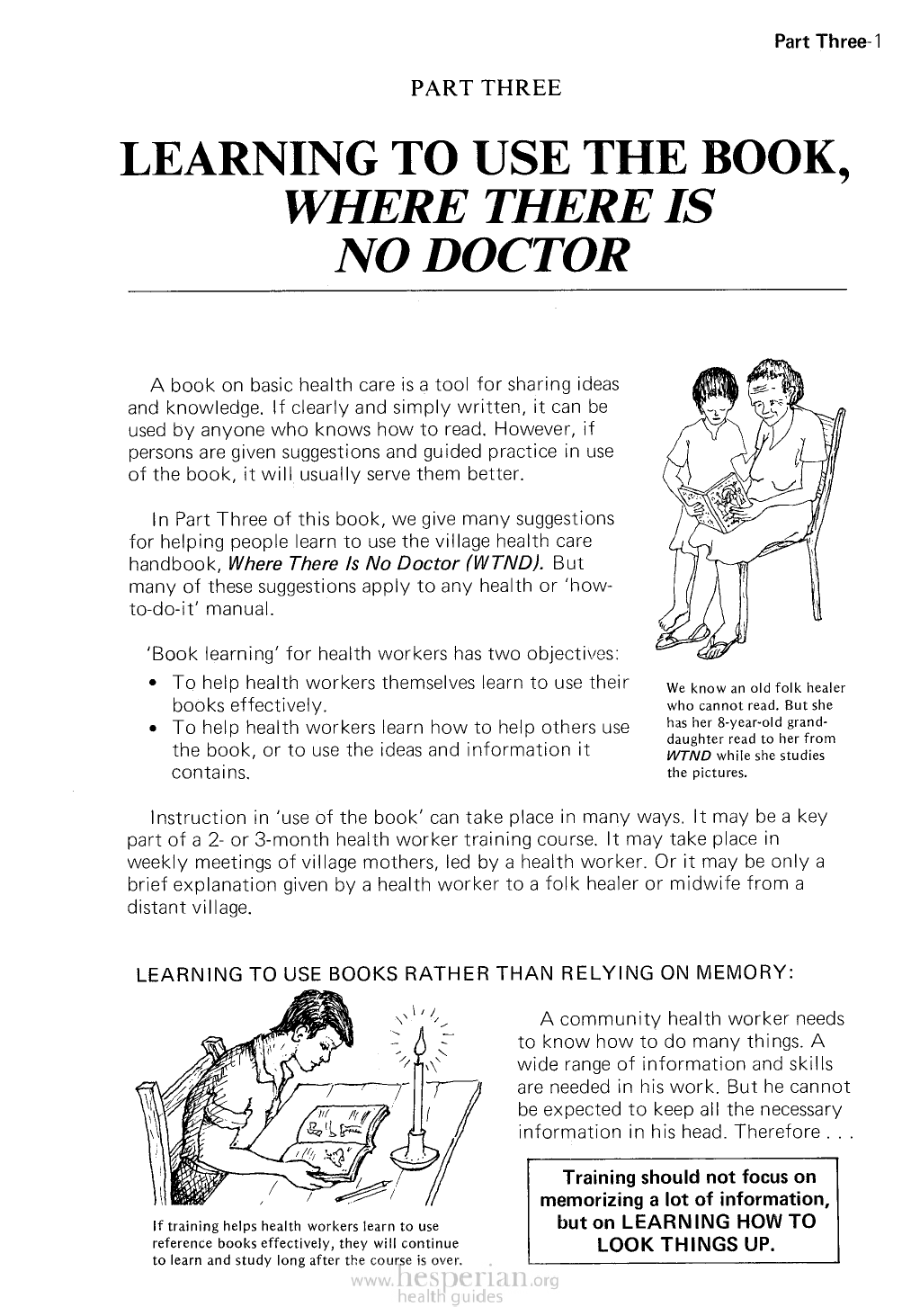
PART THREE
Part Three-i
LEARNING TO USE THE BOOK
WHERE THERE IS
NO DOCTOR
A book on basic health care is a tool for sharing ideas
and knowledge. If clearly and simply written, it can be
used by anyone who knows how to read. However, if
persons are given suggestions and guided practice in use
of the book, it will usually serve them better.
In Part Three of this book, we give many suggestions
for helping people learn to use the village health care
handbook, Where There ts No Doctor (WTND). But
many of these suggestions apply to any health or ‘how-to-
do-it’ manual.
‘Book learning’ for health workers has two objectives:
• To h e l p h e a l t h w o r k e r s t h e m s e l v e s l e a r n to
use their books effectively.
• To help health workers learn how to help others
use the book, or to use the ideas and information it
contains.
We know an old folk
healer who cannot read.
But she has her 8-year-old
granddaughter read to her
from WTND while she
studies the pictures.
Instruction in ‘use of the book’ can take place in many ways. It may be a
key part of a 2- or 3-month health worker training course. It may take place in
weekly meetings of village mothers, led by a health worker. Or it may be only
a brief explanation given by a health worker to a folk healer or midwife from a
distant village.
LEARNING TO USE BOOKS RATHER THAN RELYING ON MEMORY:
If training helps health workers learn to use
reference books effectively, they will continue
to learn and study long after the course is over.
A community health worker needs
to know how to do many things. A
wide range of information and skills
are needed in his work. But he cannot
be expected to keep all the necessary
information in his head. Therefore . . .
Training should not focus on
memorizing a lot of information,
but on LEARNING HOW TO
LOOK THINGS UP.